With the inauguration of the Democratic Progressive Party’s (DPP) William Lai (賴清德) today, the DPP has already announced plans for increased social spending. Meanwhile the Chinese Nationalist Party (KMT) is pushing east coast infrastructure spending bills through the legislature, in part to feed and water its local patronage networks. The KMT plan is old: the first planning studies for it were done in 2012 under the Ma Ying-jeou (馬英九) administration. Even then the head of the highway administration, Wu Meng-feng (吳盟分), pointed out that on a typical weekday only 20 percent of the capacity of the east coast highways 9 and 11 was being used.
The KMT’s east coast transport infrastructure bill, calls for NT$2 trillion (US $61.9 billion) in spending over the next few years, according to this paper. A recent and excellent report by Commonwealth Magazine (“Can Taiwan Afford to Rescue Its Middle Class?” May 2) on the DPP’s planned spending on social, defense, and government-owned business programs calculates that the new programs and spending will require an additional US$30 billion, equivalent to roughly a third of the current government budget.
A couple of weeks ago I observed that one crowding-out effect of the spending on the insane KMT-proposed set of highways and a high speed rail system through the most beautiful areas on the island is that it would reduce funds available for spending on defense. It will also crowd-out planned social spending by the DPP.
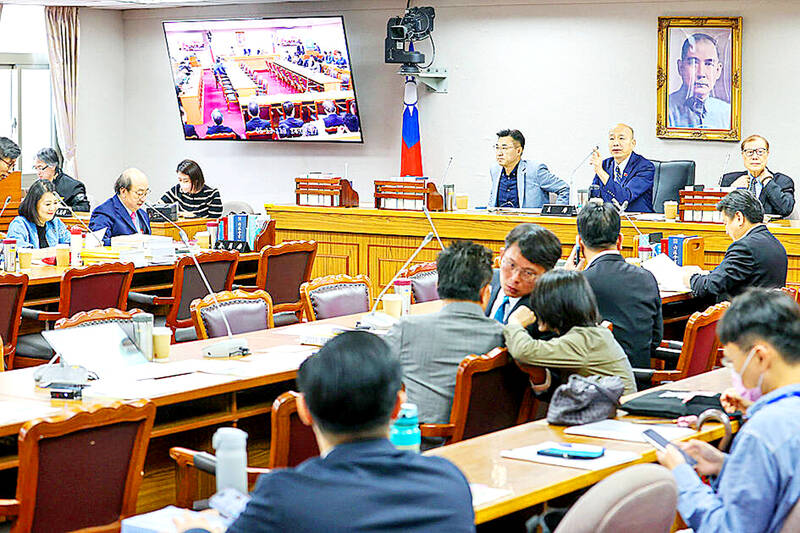
Photo: CNA
The Commonwealth piece focused on the government’s low tax take, the lack of taxes on the wealthy and on land, and on the shrinking middle class. These are problems that the DPP could have addressed during its eight years of legislative control. Now it faces the legislature engendered by its failures on these issues.
The low tax issue is one with low rates for water and electricity: the public has become used to low rates, and changes —even changes everyone deems necessary — will only call down the voters’ wrath on the parties that make them. This will tempt governments to reach for public debt to pay for ambitious social and infrastructure programs.
PUBLIC DEBT

Photo: Noah Buchan, Taipei Times
Taiwan’s public debt is usually rated highly by ratings agencies. Taipower, whose debt is predicted to reach as much as NT$1.75 trillion this year — compare that to the NT$2 trillion the KMT wants to spend on the east coast infrastructure program — is probably the worst debt offender among the 17 state-owned enterprises. Over the last couple of decades Taiwan’s public debt has averaged around 30 percent of GDP, a little higher the last couple of years. This suggests that it will not be difficult for Taiwan to borrow money.
At present the Public Debt Act (公共債務法) limits debt to 40.6 percent of average GDP over the previous three years. Taiwan thus cannot acquire public debt levels similar to those of Japan, China or the US. Taiwan’s external debt remains low.
If both major parties are going to shove their respective programs through the legislature and fund them over the next four years, then at some point legislators will start talking about revising the debt limit. Indeed, I expect the KMT to do it because it is the obvious next move if one of the KMT’s long-term goals is to sabotage economic growth in Taiwan while looting the economy. Public debt is an excellent tool for doing both, since it lowers economic growth while transferring wealth from taxpayers to (usually wealthy) public debt holders.
ECONOMIC RELIANCE ON PRC
Recall that Ma’s Economic Cooperation Framework Agreement (ECFA) was signed on the seventh anniversary of the Closer Economic Partnership Agreement (CEPA) between the People’s Republic of China (PRC) and the Hong Kong Special Administrative Region (SAR). The signing ceremony took place in Chongqing, where peace talks between the dictators Chiang Kai-shek (蔣介石) and Mao Zedong (毛澤東) took place in August of 1945. This signaled that ECFA existed not only to reduce Taiwan to an SAR-like region of the PRC empire, but also to mirror the effects of CEPA on Hong Kong.
In 2011, National Sun Yat-sen University published a report on the effects of CEPA and ECFA. Ma’s Executive Yuan had commissioned the report in order to understand why southern Taiwan so vociferously objected to ECFA. The reasons were obvious and well known to Taiwanese businessmen at the time. CEPA, the report observed, had lead to outflows of Hong Kong’s manufacturing and services from the city-state into southern China. The result was increases in the number of workers making HK$5,000 and longer working hours. The unrest of the late 2010s is hardly surprising, given the economic and social effects of PRC rule.
The overarching malign intent of Ma’s economic policies is usually underappreciated. Their long-term purpose was to help the PRC achieve its goal of hollowing out Taiwan’s economy, on which the island’s independence relies. Ma’s plan envisioned a triple whammy: first, free economic zones that would bring in PRC labor and products, including vast amounts of smuggling, that would displace local labor and manufacturing. Second, ECFA to reduce Taiwan’s trade surplus with the PRC and displace Taiwanese manufacturing by flooding the island with cheap PRC products.
Finally, the flip side of this was the tourism boost, which would provide the economic anesthetic for this set of operations, providing a pretense of industry that would actually drive up the value of the New Taiwan dollar as tourists purchased local currency (reducing exports), while moving investment from manufacturing with its positive effects on living standards, to tourism. CEPA had similarly removed restrictions on tourists from the PRC mainland to Hong Kong and Macao.
The follow-on services pact was intended to assure eventual PRC dominance over Taiwan’s financial sector and the transfer of its services and extensive staff to Taiwan. In sum, Ma’s program was economic hollowing accompanied by ethnic flooding.
The east coast infrastructure program was first proposed under Ma. In the recent election, the KMT candidate became little more than a sock puppet for Ma. Whatever status within the KMT Ma might have, it is clear that the KMT has adopted the goals of his policy program, even though the public has rejected many of Ma’s tactics.
Watch for KMT moves to alter the public debt limit. It’s the logical next step of big public spending programs, and one of the few remaining arrows in the KMT quiver, since the public wisely rejected so many others.
Notes from Central Taiwan is a column written by long-term resident Michael Turton, who provides incisive commentary informed by three decades of living in and writing about his adoptive country. The views expressed here are his own.
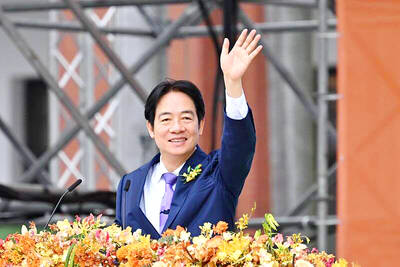
President William Lai (賴清德) yesterday delivered an address marking the first anniversary of his presidency. In the speech, Lai affirmed Taiwan’s global role in technology, trade and security. He announced economic and national security initiatives, and emphasized democratic values and cross-party cooperation. The following is the full text of his speech: Yesterday, outside of Beida Elementary School in New Taipei City’s Sanxia District (三峽), there was a major traffic accident that, sadly, claimed several lives and resulted in multiple injuries. The Executive Yuan immediately formed a task force, and last night I personally visited the victims in hospital. Central government agencies and the
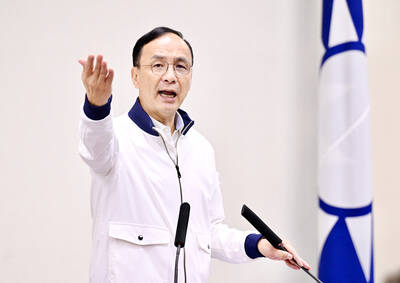
Australia’s ABC last week published a piece on the recall campaign. The article emphasized the divisions in Taiwanese society and blamed the recall for worsening them. It quotes a supporter of the Taiwan People’s Party (TPP) as saying “I’m 43 years old, born and raised here, and I’ve never seen the country this divided in my entire life.” Apparently, as an adult, she slept through the post-election violence in 2000 and 2004 by the Chinese Nationalist Party (KMT), the veiled coup threats by the military when Chen Shui-bian (陳水扁) became president, the 2006 Red Shirt protests against him ginned up by
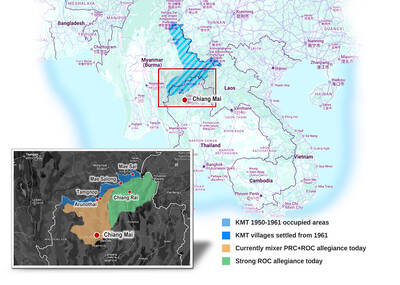
As with most of northern Thailand’s Chinese Nationalist Party (KMT) settlements, the village of Arunothai was only given a Thai name once the Thai government began in the 1970s to assert control over the border region and initiate a decades-long process of political integration. The village’s original name, bestowed by its Yunnanese founders when they first settled the valley in the late 1960s, was a Chinese name, Dagudi (大谷地), which literally translates as “a place for threshing rice.” At that time, these village founders did not know how permanent their settlement would be. Most of Arunothai’s first generation were soldiers
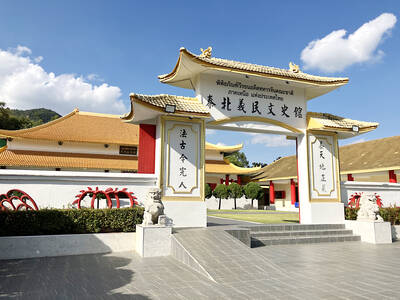
Among Thailand’s Chinese Nationalist Party (KMT) villages, a certain rivalry exists between Arunothai, the largest of these villages, and Mae Salong, which is currently the most prosperous. Historically, the rivalry stems from a split in KMT military factions in the early 1960s, which divided command and opium territories after Chiang Kai-shek (蔣介石) cut off open support in 1961 due to international pressure (see part two, “The KMT opium lords of the Golden Triangle,” on May 20). But today this rivalry manifests as a different kind of split, with Arunothai leading a pro-China faction and Mae Salong staunchly aligned to Taiwan.